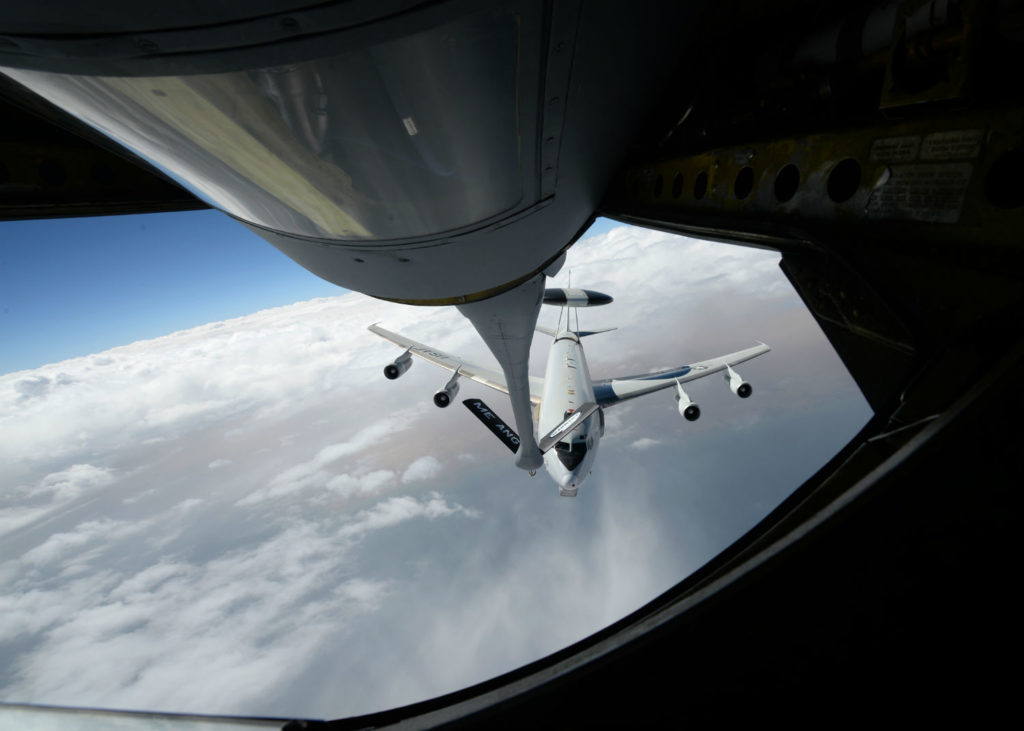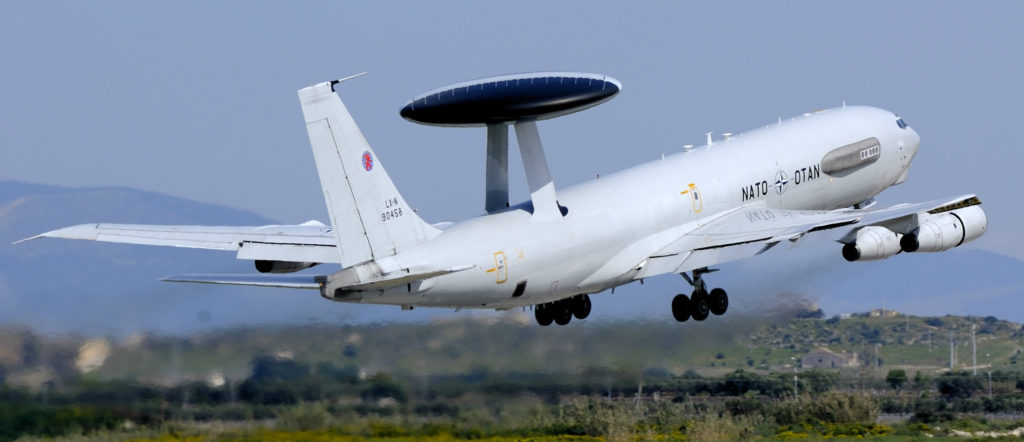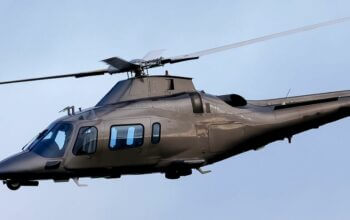Estimated reading time 5 minutes, 11 seconds.
Royal Canadian Air Force (RCAF) crews might be rejoining the NATO Airborne Warning and Control System (AWACS), partly restoring a long-standing commitment terminated by the former Conservative government nearly seven years ago, but whether and when that might happen is still being examined.

“NATO is a cornerstone of Canada’s international security policy and is one of our most important multilateral relationships,” said Defence Minister Harjit Sajjan in a Feb. 14 statement during a visit to the 29-country alliance’s headquarters in Brussels, Belgium.
“AWACS is a key NATO capability that we will support by contributing to its operations and support budget. We have committed to keeping Canada engaged in the world, and continuing to commit ourselves to NATO and its missions are important steps toward that goal.”
The Department of National Defence (DND) could not immediately say how many RCAF personnel will be restored to the operation, but it said in a subsequent email to Skies that the “return to multilateralism” would be “at the entry level and not at the same remit as we had before.”
The immediate commitment would be funding rather than personnel but, “the potential for RCAF members to service . . . will be explored at a later date.”
The exact amount of Canada’s renewed contribution was “still being decided, but is expected to be between $17-20 million annually.”
That compares with an estimated $50 million annually before the RCAF involvement was throttled back and eventually cut.
Even so, DND acknowledged that intelligence, surveillance and reconnaissance are “increasingly relevant in today’s security environment,” in which the alliance has significantly increased AWACS missions.

This includes missions in central and eastern Europe, where Canada is leading a multinational NATO battle group based in Latvia.
Set up in 1978 and formerly known as the NATO Airborne Early Warning & Control (NAEWC) Force, its fleet of 16 E-3A modified Boeing 707s is based in Geilenkirchen, Germany.
Command is periodically swapped between brigadier generals in the United States and German air forces, with a Royal Netherlands Air Force colonel always serving as a deputy.
Each of the three wings — operations, logistics and base support — as well as forward operating bases and one forward operating location, is headed by a colonel from one of the participating countries.
The E-3A operations are staffed by approximately 1,400 military and civilian personnel. One E-3A crewmember, German Capt Berthold “Kaiser” Wilhelm, recently logged his 10,000th flying hour.
Also used for command-and-control purposes as well as fighter control and search and rescue support, the E-3As are identifiable by the distinctive radar dome atop the fuselage.
Their usual operational altitude of approximately 10 kilometres (32,800 feet) enables their multinational crews to monitor airspace within a radius of more than 400 km, digitally linked to ground, sea, and airborne commanders.
A typical mission lasts eight hours, during which their pulse Doppler radar can distinguish between targets and ground reflections, giving early warning of low- or high-flying aircraft operating over the territory of a potential aggressor.
Canada withdrew from the AWACS program in 2011 after the Conservatives’ 2010 DND Strategic Review, part of a government-wide cost-cutting effort.
At the time, Canada had been involved for more than 25 years and the E-3A had been seen as a key to NATO’s success during its intervention in Libya.
Peter MacKay, Canada’s defence minister at the time, had given notice of the plan the previous year, explaining that it would free up 142 Canadians, who were assigned to NATO, for other roles.
Announcing the reversal, DND noted that part of Canada’s commitment to the alliance-as outlined in last year’s “Strong, Secure, Engaged” policy document-includes “leading and/or contributing forces to NATO and coalition efforts to deter and defeat potential adversaries, including terrorists, to support global stability,” as well as “leading and/or contributing to international peace operations and stabilization missions with the United Nations, NATO, and other multilateral partners.”
In response to the challenges posed by today’s security environment, NATO has significantly increased the use of its AWACS fleet in areas of importance to Canada, including central and eastern Europe








